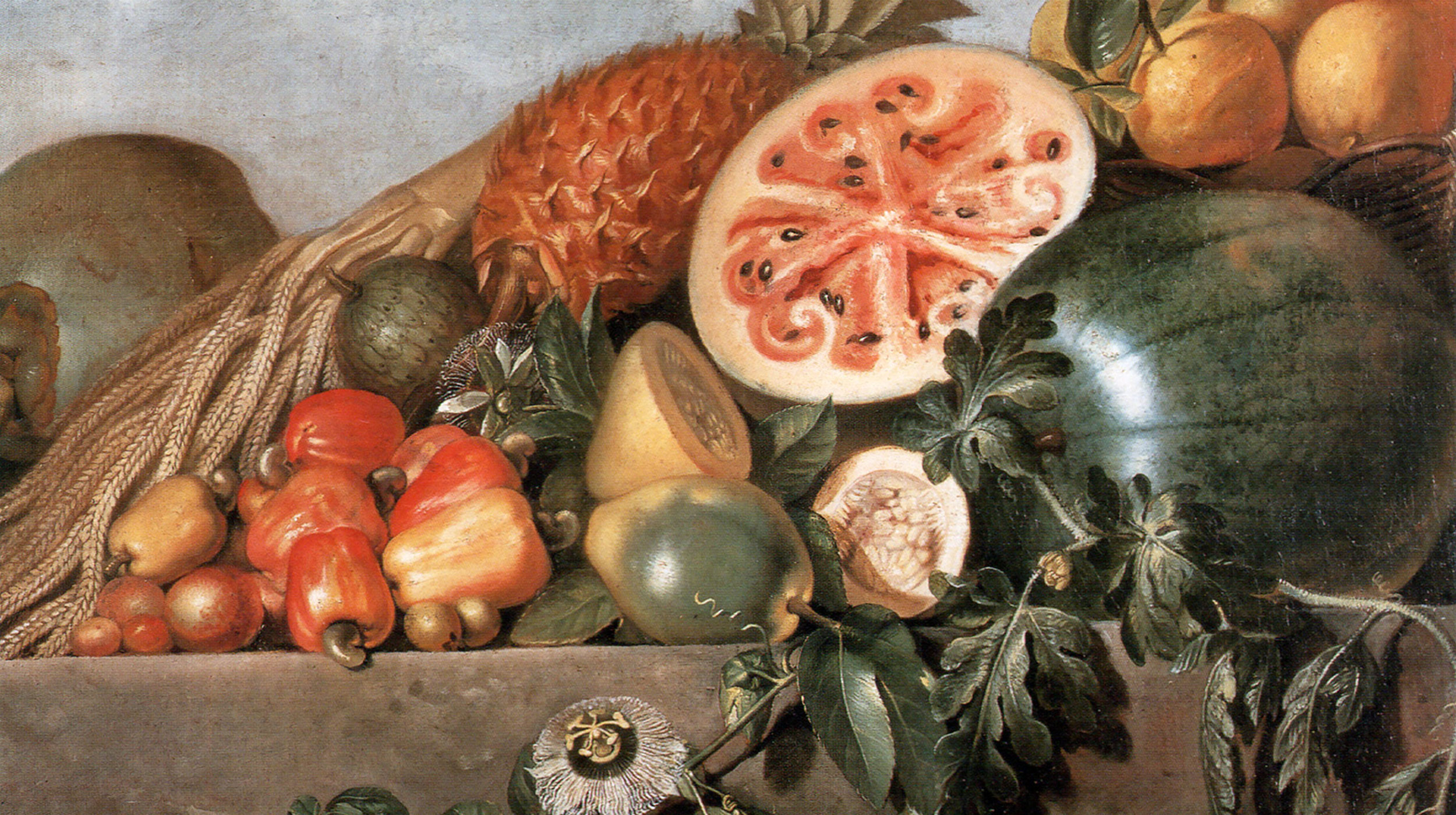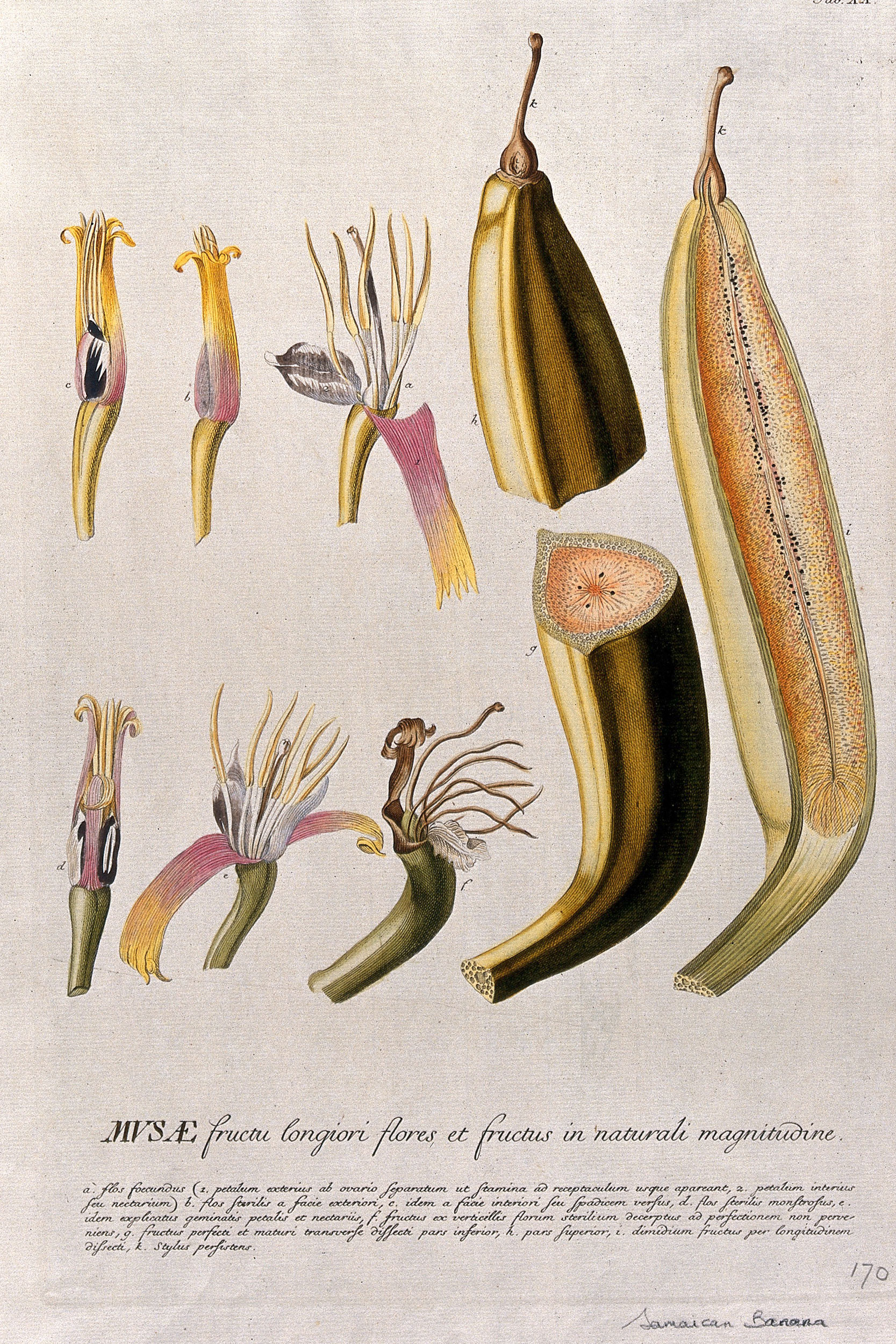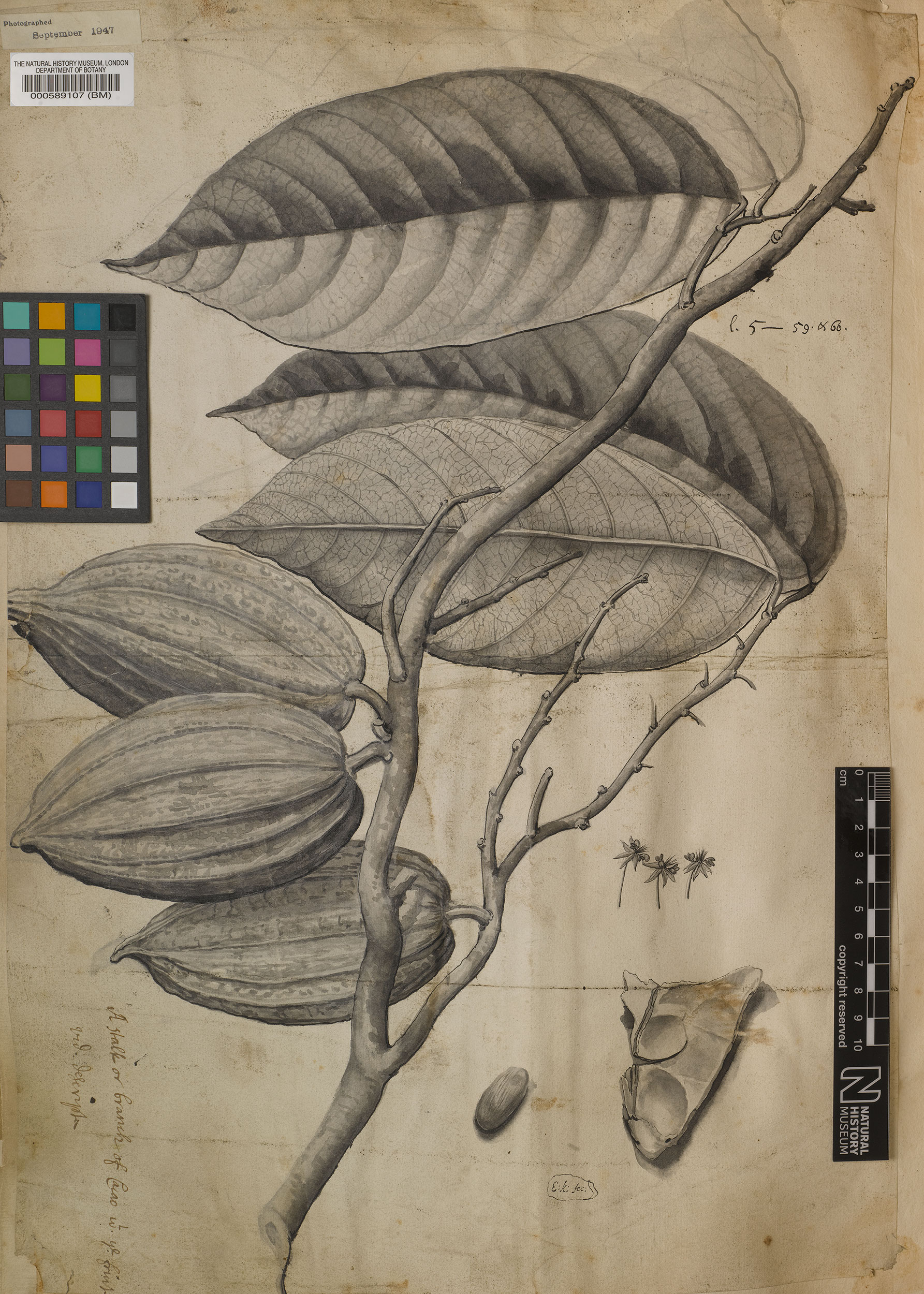How plants have influenced human societies

Detail from a painting by 17th-century artist Albert Eckhout.
Wikimedia/Public Domain
Dumbarton Oaks project aims to shed a fresh cultural and scientific light on the ties between us and the environment
Like many people, Yota Batsaki spent the last year learning about the natural world around her. Unlike the majority of them, the comparative literature scholar’s interest was mostly nurtured online rather than during long walks to escape lockdown cabin fever.
In March, Batsaki, executive director of Harvard’s Dumbarton Oaks research institute, library, museum, and garden in Washington, D.C., and a group of colleagues launched the Plant Humanities Lab — a digital repository of information and narrative storytelling on the historical and scientific lives of plants like the peony, turmeric root, and the banana.

The project is part of a broader movement in humanities research that engages with critical questions of climate change and knowledge production. Researchers come from the social sciences, biology, botany, and other disciplines that rarely converge in academia. Through collaborative storytelling and information-gathering, they hope to shed light on the historical relationships between humans and their environments — and improve our current and future relationships with nature.
“The Plant Humanities Lab activates many disciplinary approaches to the cultural histories of plants. You can look at plants from the perspectives of botany, or the history of medicine, the history of migration, of slavery, or of food,” said Batsaki, Ph.D. ’02. “You can weave together these different perspectives to better understand how we ended up where we are now in terms of our relationship to nature.”
With support from the Andrew W. Mellon Foundation, Batsaki and Alex Humphreys, director of JSTOR Labs — a subsidiary of academic database JSTOR, which creates digital tools for education and research — began work on the Plant Humanities Lab project three years ago, bringing together web developers, librarians, and scholars.
“Due to climate change and habitat loss, two-fifths of plant species are threatened with extinction, and the spread of invasive species may contribute to declining biodiversity. So plants are, visually, important indicators of change in our environment, of degradation in our environment, but also resilience,” said Batsaki. “We are also experiencing a reassessment of the legacies of human and environmental trauma connected with colonialism and capitalism, and the way people and plants are entangled in those stories.”
“This is a co-production of knowledge between historians, scholars in the history of science, anthropology, librarians, [and] developers, and the work demonstrates the contemporary value and relevance of our special collections,” said Thomas B.F. Cummins, director of Dumbarton Oaks and Dumbarton Oaks Professor of Pre-Columbian and Colonial Art. “Dumbarton Oaks and JSTOR Labs are reaching out to the public, but the project is also bringing people in to see what Harvard does best.”
In one piece, “Pelargonium: By Any Other Name Would Smell as Sweet?,” Daisy Reid, Verónica Matallana Chaves, and Yao Jiang wrote about the flower pelargonium (often misclassified as a geranium), tracing its introduction to Europe from Southern Africa in the 1600s to the height of its popularity in Victorian England during the rise of the Industrial Revolution and home gardening movement.

In another, “Cacao: Indigenous Network to Global Commodity,” Rebecca Friedel analyzed the role of the cacao plant as a medicine, trade commodity, and design element in carved religious vessels in Mesoamerica (the indigenous cultures of Mexico and Central America that developed prior to Spaniards’ arrival in the 16th century).
Each narrative uses materials from Dumbarton Oaks’ rare book collection, as well as primary and secondary resources from JSTOR and JSTOR Global Plants, the Biodiversity Heritage Library, and Artstor. Site visitors can scroll through the narrative and see maps, drawings, and images, as well as explore other online resources through hyperlinks in the text.
“So much historical and rare material has been digitized, but it’s hard for the public or even the student to find their way into that material,” said Batsaki, who wrote a lab narrative on the global diversity and evolutionary history of the tropical plant “Heliconia” with W. John Kress, senior research botanist and curator of botany (Zingiberales) at the Smithsonian National Museum of Natural History.
“Through a narrative on the Plant Humanities Lab website, you can see that one of the images is stored in the Biodiversity Heritage Library and click on it. That will take you to the whole book, and you can scroll through it, which might lead you somewhere else,” she said. “Or you might learn how to read a herbarium specimen and integrate it into a broader plant narrative. Hopefully the lab project will demystify those resources a little bit.”
The collective effort behind the lab’s creation is part of a broader mission at Dumbarton Oaks to foster collaboration and expand the pedagogical reach of the institution’s museum and library collections, which are available for virtual perusal during the COVID-19 pandemic. (The 16-acre terraced Dumbarton Oaks gardens have reopened for in-person visitors.)
“Plants are, visually, important indicators of change in our environment, of degradation in our environment, but also resilience.”
Yota Batsaki
This summer, Dumbarton Oaks is virtually hosting its third Plant Humanities Summer Program for undergraduate and graduate students to expand their knowledge of the emerging field and learn digital skills. Participants then work in teams to create their own, peer-reviewed plant humanities narratives for the website. This summer also saw the first iteration of a two-week virtual faculty residency for instructors at community colleges and universities from across the U.S. and as far away as India.
“There are real pedagogical applications of the lab, and we are integrating our work into a curriculum that shows that plants and animals are not so divested of one another, but are interrelated,” said Cummins. “This expands and makes accessible some of the riches of Dumbarton Oaks.”
Going forward, Batsaki, Cummins, and their colleagues hope the lab will continue to spark interest in the relationship between humans and the natural world. They also want to help scholars across disciplines work together to tell stories about those relationships that draw on a variety of knowledge resources.
“As humanists, we are not necessarily trained to work in teams, and it’s often a very solitary undertaking to work on a thesis or a book project,” said Batsaki. “This has been a team effort from the beginning, with humanists talking to developers and scientists. At the end of the summer program, when the students create the narratives, they work collaboratively and contribute their different perspectives from art history, literary studies, or the history of medicine. I think that experience is really important to formulating new research questions and more inclusive approaches to the urgent challenges of the Anthropocene.”
“History is much more than just the social formation of the majority, and in this case, the relationship between the domestication of plants or the destruction of environments for needs or requirements of communities is something that we’re really just becoming aware of,” through indigenous and Black histories, added Cummins. “I see the Plant Humanities Lab as a model for how digital humanities can integrate different disciplines in a collaborative way, to produce new modalities of knowledge that are useful for a larger public.”




